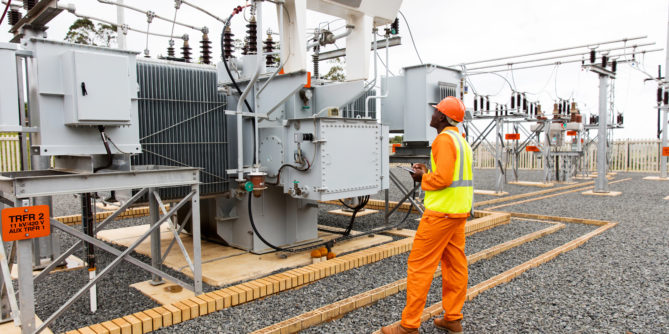More than 600 North American power sector executives participated in Utility Dive’s 2017 industry survey, and 57 percent of them cited “aging workforce” as an important industry issue [1]. Other vital concerns include aging infrastructure, renewables integration and stagnant load growth.
How can utilities meet those challenges? A good start would be recognizing that they don’t need to tackle these problems alone. In fact, they probably can’t.
The depth and breadth of technical competency required by the utility of the future is likely to be so extensive, most utilities won’t be able to afford to keep in-house labour resources on standby. In addition, utilities are likely to gain greater productivity from the field workforce if they partner with contracting organizations. That’s because good contractors have specialized expertise as well as processes and systems in place to boost productivity.
Help wanted
Canadian utilities have known about their shrinking workforce for some 15 years. When the Canadian Electricity Association first studied the problem in 2004, it found that nearly 40 percent of electric utility employees would be eligible to retire by 2014 [2]. A dip in training problems at educational institutions during the 1980s left a gap of qualified personnel in the pipeline throughout North America.
Adding to the problem is the increasing complexity of the grid itself. The proliferation of distributed energy resources (DERs) creates a host of complications in grid maintenance and planning. Two-way power flows, for instance, can endanger line workers and cause control devices like capacitors or relays to trip if they see power flowing in the wrong direction.
Voltage excursions from variable generation of renewable resources is another problem. Cloud cover over a solar array can bring a precipitous and instantaneous drop in voltage. Sunny days can push power onto the local distribution grid, causing voltage to rise.
Equipment takes a hit, too. Some utilities have seen an uptick in tap change operations because load-tap changers are trying to keep up with voltage fluctuations. Since LTCs are generally rated for only a certain number of tap changes, they can reach end of life more quickly.
Utilities also have seen overloading on lines, as well as phase imbalance when solar installers fail to connect PV panels to each of the three phases serving a customer’s premises.
Such conditions are forcing utilities to upgrade equipment, shore up or replace aging infrastructure, increase automation, put more sensors and monitors on the lines and raise grid awareness through IT systems with powerful analytics. These are the changes stretching utility field workers. Worse, all of this is happening when load defection is occurring and utility budgets are stretched thin.
Maximizing labour dollars
At a time when there is so much to be done and so little cash to do it with, utilities need to think differently about how to source talent. It’s time to move from a dedicated workforce to an extended workforce that can flex according to business needs.
One reason is productivity. According to researchers from the consultancy Booz & Company, North American utilities typically get as little as 40 percent wrench time out of their employees. One utility Booz worked with only got 35 percent productivity, or two hours and 45 minutes of wrench time per eight-hour day.
“We have found that unproductive practices and processes are embedded throughout most individual work order planning and execution activities,[3]” the Booz researchers wrote in a white paper on improving field force productive time.
Alternatively, the Booz researchers found that contractors had higher efficiency due to better planning and materials management, as well as more onsite supervision.
Automation makes a difference, too. At Spark Power, we’ve put all mission critical information employees find in the company enterprise systems into field workers’ hands with our Move-to-Mobile project backed by FieldAware, a leading field-service automation solution.
The system also gives our planners and dispatchers one-click scheduling as well as real-time visibility into the location, status and history of each job performed by every technician. And, it takes the paperwork out of work orders, allowing workers to view, edit and complete these documents from nearly any device.
By leveraging such digital tools, as well as data-driven insight from utility systems like SCADA, Spark’s field workers consistently run with a productivity rate nearing 90 percent. That’s more than two times more wrench time than many on-staff utility crews, and that kind of work output can cost-effectively make up for a lot of retirees.
To learn more about workforce changes within the energy sector, register for the #FutureofWork: Building the New Energy Workforce forum on Monday, June 26, 2017 at MaRS Discovery District in Toronto, ON. Spark’s COO, Gord Reynolds will be participating on the panel. Click here for more information and ticket purchase.
References:
[1] Utility Dive, “2017 State of the Electric Utility Survey Report”, http://www.utilitydive.com/library/2017-state-of-the-electric-utility-survey-report
[2] Canadian Electricity Association, “Vision 2050 – The Future of Canada’s Electricity System”, https://electricity.ca/wp-content/uploads/2014/03/Vision2050.pdf
[3] Booz & Company, “Lifting the Limits”, https://www.strategyand.pwc.com/media/uploads/Lifting_the_Limits.pdf
